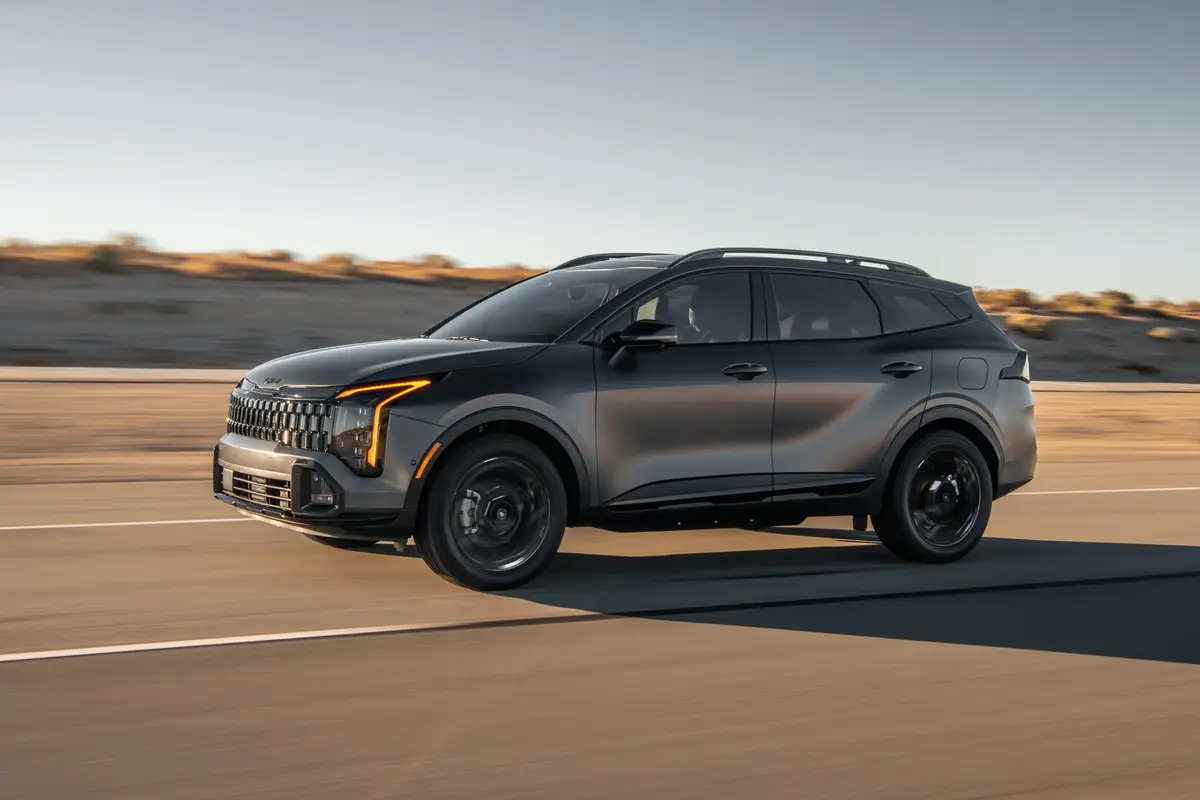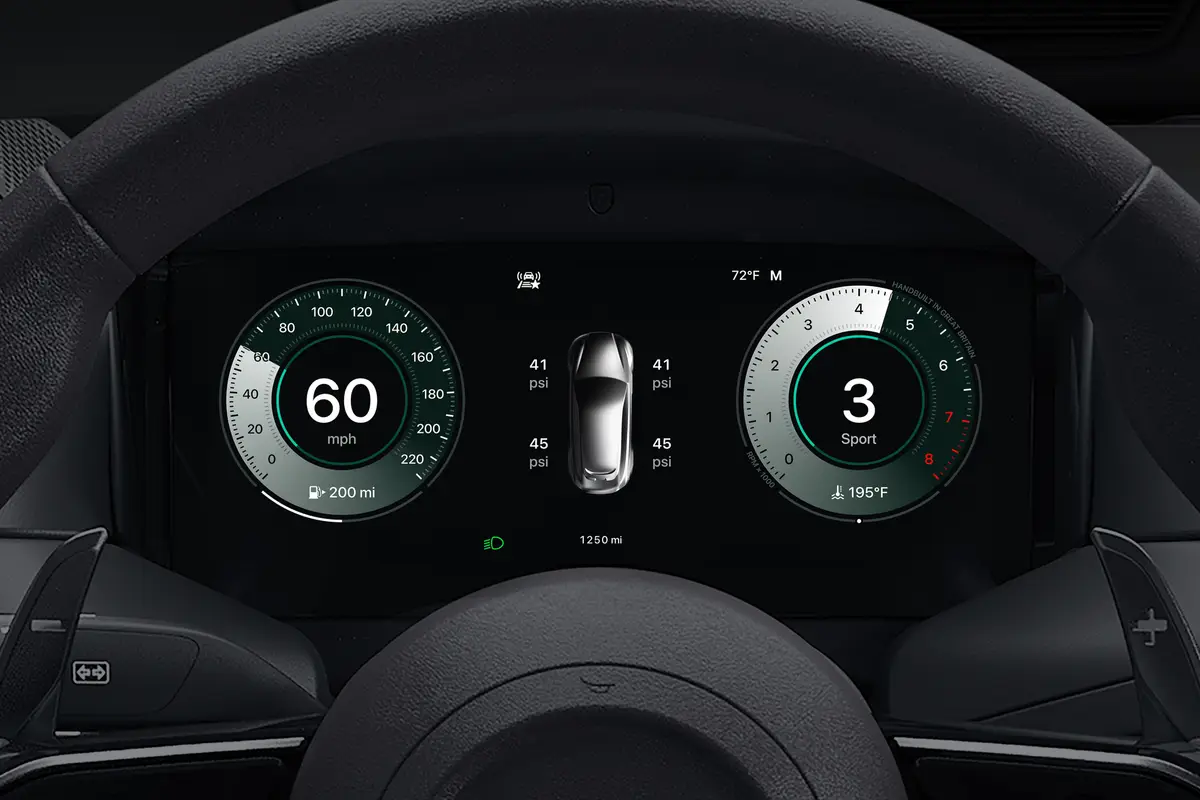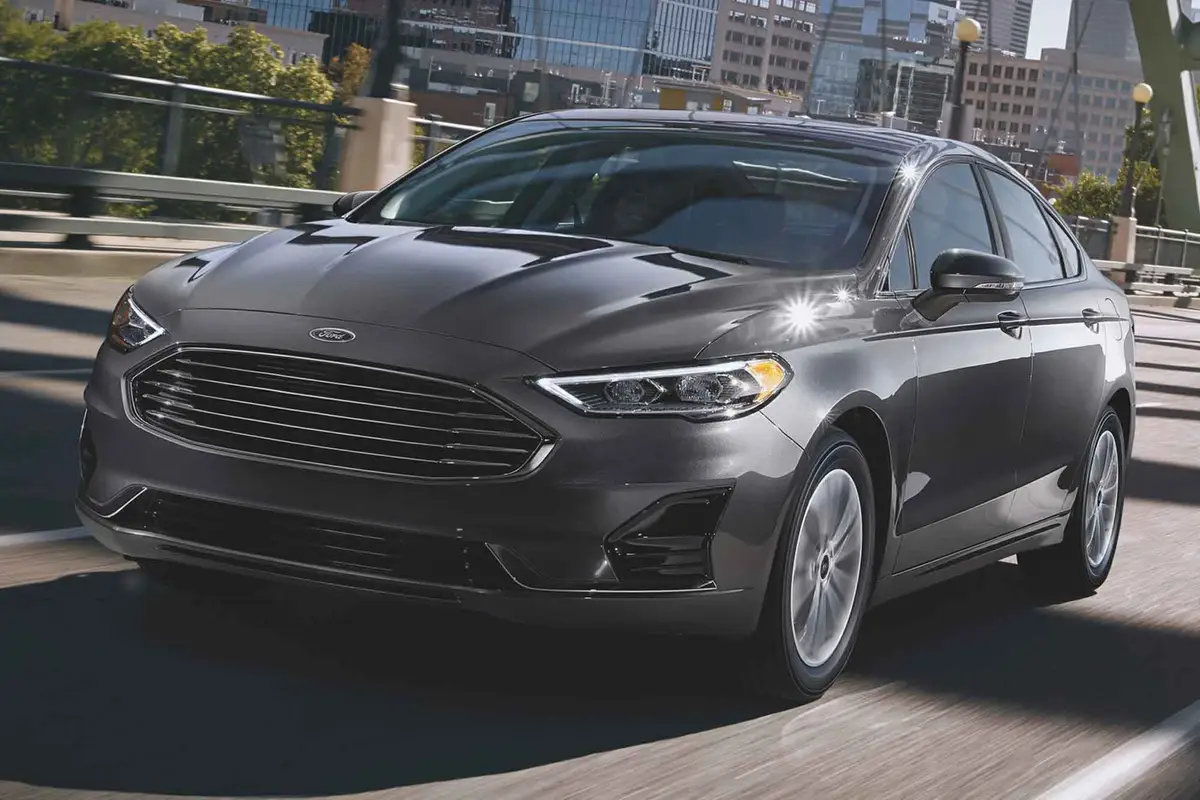Our view: 2007 Hyundai Tiburon

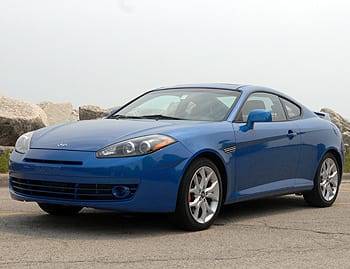
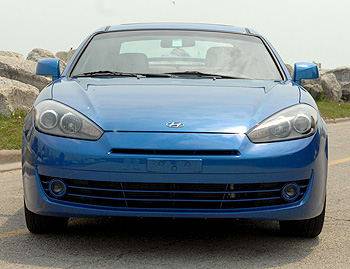
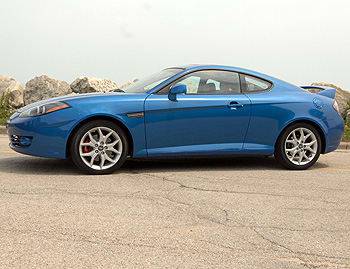
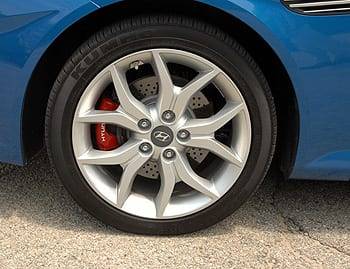
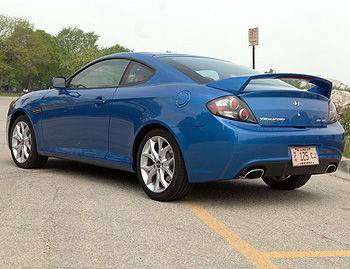
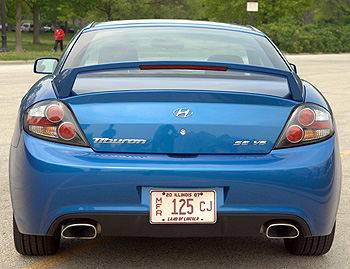
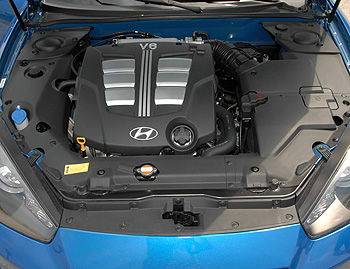
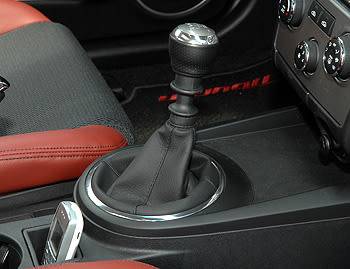
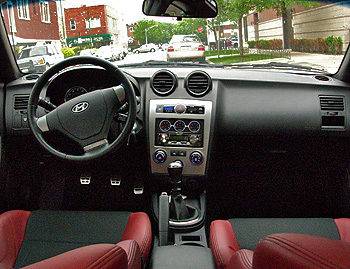
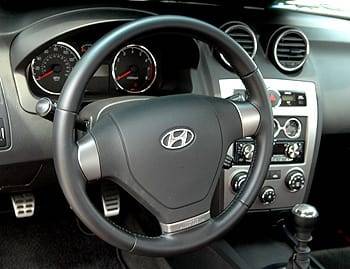
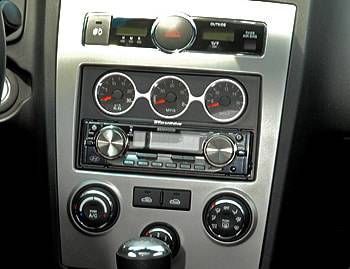
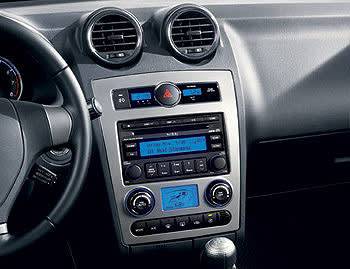
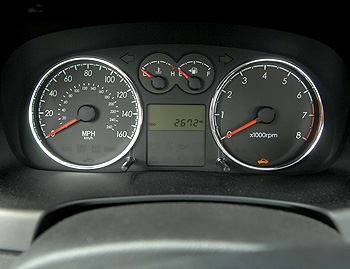
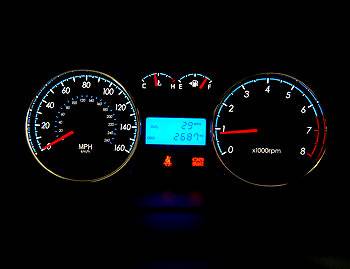
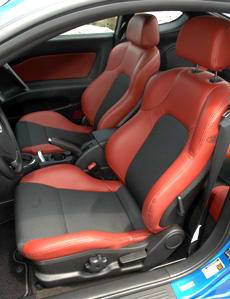
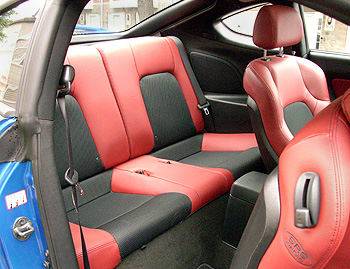
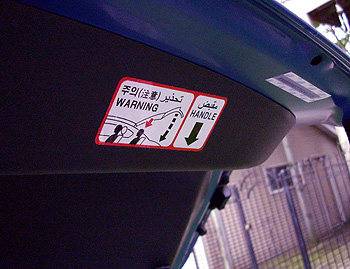
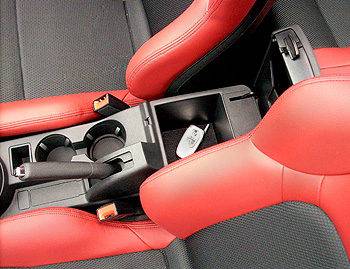
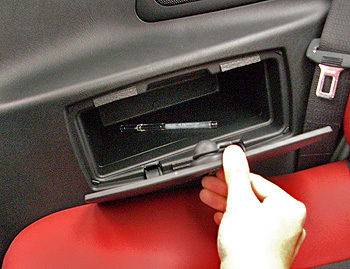
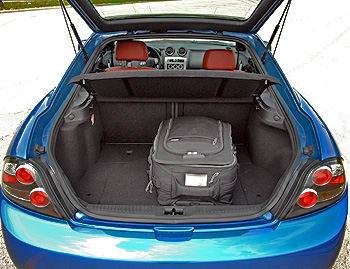

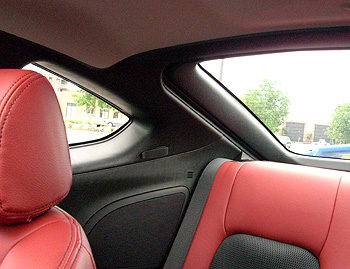






















If you’re on the hunt for something a bit more interesting than the usual mass-market coupe, consider the Hyundai Tiburon. The restyled 2007 model sports a perky new look, and the optional V6 delivers brisk acceleration. V6 models start under $20,000 as the Hyundai Tiburon GS, making the Tiburon a compelling alternative to a two-door Honda Civic or Pontiac G5. Performance-oriented driving enthusiasts should save up and look elsewhere; as serious acceleration and top-notch handling go, there’s much better bang for a few more bucks.
This marks the second time the front-wheel-drive Hyundai Tiburon Coupe has received a face-lift since the current generation bowed in early 2002. Besides the bumper, headlight and fender revisions, the top-of-the-line Tiburon SE promises sharper handling and, for the first time in a Tiburon, an electronic stability system. Other trim levels include the base GS, GT and GT Limited. All except the GS have the V6. I tested an SE with a manual transmission.
Going & Stopping
The GS starts with a 138-horsepower, 2.0-liter four-cylinder, while other trims get Hyundai’s 2.7-liter V6, good here for 172 hp. Both engines team with a five-speed manual transmission or a four-speed automatic with a manual-shift mode. The Tiburon SE comes with a six-speed manual.
With 181 pounds-feet of torque on tap at a relatively low 3,800 rpm, the V6 delivers sprightly acceleration from a standing start through much of the rev range. There’s some modest torque steer if you push the car hard, but it never overwhelms the driving experience. The engine runs out of steam well short of its 6,500 redline, so keep the tachometer between 2,000 and 5,000 rpm for continuous power. Although the drivetrain lacks the ferocity of a V6 Mitsubishi Eclipse or the high-revving punch of a Volkswagen GTI, it feels a few steps quicker than the four-cylinder Eclipse — or Scion tC, for that matter — and it should prove beefy enough for anyone used to a non-performance car.
Shifting gears is something of a mixed bag. The gearshift’s throws are a bit long, and those accustomed to snappy footwork will bemoan the lengthy clutch. Some of our drivers objected to the near-dead pedal feel and abnormally high engagement. Still, the accelerator is sensitive enough for any novice to rev-match like a pro. I’m abysmal at heel-and-toe shifting, but those who do it should have no complaints, as the gas and brake pedals are positioned fairly close together.
Four-wheel-disc anti-lock brakes are standard. The Tiburon SE adds red calipers and 12-inch, cross-drilled front discs, versus 11-inch plain discs in other trim levels. The discs are cross-drilled to enhance cooling and theoretically yield better resistance to brake fade. I couldn’t detect any fade after repeated hard stops, but the brakes never stood out as exceptionally strong for this class.
The 2007 Hyundai Tiberon V6 Coupe with a six-speed manual transmission gets an EPA-estimated fuel economy rating of 19 mpg combined. It gets an estimated 16 city mpg and 24 highway mpg.
Ride & Handling
Depending on pavement conditions, the front-wheel Hyundai Tiburon’s handling ranges from respectable to troublesome. The Hyundai Tiburon SE offers a track-tuned version of the standard car’s MacPherson-strut front and multilink rear suspension, and it allows minimal body roll. Most trim levels come with 17-inch wheels and all-season P215/45R17 tires, and they deliver excellent grip — so much that I had to double-check to make sure they weren’t summer tires.
The steering wheel renders lifelike response without too much power assist, but it lacks the lightning-quick precision that sets cars like the Mazda3 apart. Take to the corners, and the chassis tends toward slight understeer. It’s remarkably neutral at its limits, never plowing wide too soon, as many front-wheel-drive cars do. The electronic stability system is a willing companion — it permits some understeer and reigns things in only as the rear wheels start to slip.
Hit a bump with the steering wheel anywhere off center, and things quickly unravel. The wheels will hop over any bumps while you’re making gradual curves, and in tight corners even the slightest rut sends the front tires dancing. This isn’t a deal-breaker for more modest drivers, but anyone looking to carve corners will want to consider a vehicle with more refined manners.
Ride comfort is minimal in the SE. The suspension makes for plenty of road noise on the highway, and it packs a brittle wallop over potholes and speed bumps. Other trim levels have softer tuning and presumably a more tolerable ride, so be sure to test drive one of them for comparison.
The Inside
The Hyundai Tiburon’s four-passenger cockpit had a trendy vibe when it appeared several years ago. Successive tweaks have had mixed results. The fog and hazard light controls now have flush finishes that would impress a Lexus driver, the dashboard has soft-touch materials and the blue and white gauges look sharp at night. Then there are the clinkers: Last year’s standard stereo has been swapped for an aftermarket Kenwood unit that looks and sounds like it was installed at a local electronics shop, and both the GT Limited and SE trims have some garish-looking red leather upholstery. Amenities like steering-wheel audio controls and an auxiliary jack for MP3 players are conspicuously missing, too.
Those of larger build will find the cabin a bit snug. The front seats have aggressive side bolsters that pin love handles in place, and the optional moonroof hogs an inch and a half of headroom. I’m 5 feet, 11 inches tall, and my moonroof-equipped test vehicle left me with a case of hat hair more than a few times.
Visibility is characteristic of most sports coupes, with a low roofline and high dashboard limiting views out the front and side. The narrow C-pillars make for a reasonably modest blind spot — something that can’t be said for the Eclipse, among other Tiburon competitors.
Leave the backseat for the kids. There’s minimal legroom once front-seat passengers are situated, and with the rear hatch closed, headroom for adults is scant.
Safety
As of this writing, the Insurance Institute for Highway Safety had not crash-tested the Hyundai Tiburon. Standard safety features include all-disc antilock brakes, as well as dual front and seat-mounted side-impact airbags. The Tiburon SE adds traction control and an electronic stability system.
Side curtain airbags are not available, and there’s nothing in the way of head restraints for backseat passengers.
Features & Pricing
Without the destination charge, prices range from $16,695 for the four-cylinder Hyundai Tiburon GS to $22,095 for the V6 SE. Add $1,100 to trade the five-speed manual transmission for an automatic on most trim levels; a six-speed manual is the sole choice for the SE.
- At $16,695, the GS includes power windows and door locks, air conditioning, remote keyless entry, fog lights and 16-inch alloy wheels. It also comes with the awful Kenwood CD stereo, and anyone who wants cruise control will have to cough up $1,150 for the Premium Package, which also includes a moonroof.
- The $19,395 GT has a more attractive factory CD stereo, as well as the 2.7-liter V6, cruise control and 17-inch alloy wheels. The seats come in a leather and cloth combo, and it’s the only trim level where the leather is black.
- The $21,695 GT Limited adds red leather seats, a moonroof, automatic climate control and an Infinity six-CD stereo.
- The $22,095 SE adds a track-tuned suspension with upgraded brakes, an electronic stability system, a larger rear spoiler, auxiliary dashboard gauges and a six-speed manual transmission. Unfortunately, it also reverts to the Kenwood stereo and red leather and cloth seats, and it loses the automatic climate control and moonroof. The latter is a $900 option.
Tiburon in the Market
Hyundai says just over half of all Hyundai Tiburon buyers choose the four-cylinder GS. No doubt they like the vehicle for its fetching looks, generous warranty and long list of standard features. Tiburon GT buyers — the second-largest group, according to Hyundai — get the peppy V6 and a friendlier cabin to boot. I can’t recommend any of the higher trim levels, as the engine and suspension lack the refinement to play in the same league as a GTI or V6 Eclipse. If you want the cachet of a sports coupe with some extra zip, consider the sub-$20,000 Tiburon GT. If you have the cash for something more, get something more — from someone else.
| Send Kelsey an email |

Former Assistant Managing Editor-News Kelsey Mays likes quality, reliability, safety and practicality. But he also likes a fair price.
Latest news
